- Home
- Encyclopedia
- Yellowstone Park, Arnold Hague and The Birth of...
Yellowstone Park, Arnold Hague and the Birth of National Forests
No logging, no grazing—even no trespassing? The Yellowstone Timber Land Reserve, the first land to be set aside in what evolved into today’s National Forest system, had a distinctly different character from its successors. Here’s why.
In 1883, when Arnold Hague arrived in Yellowstone, the 11-year-old national park was at a crossroads. The Northern Pacific Railroad had just completed its tracks across southern Montana, and railroad officials intended to market Yellowstone as a tourist pleasure resort. The conflict inherent in the national park idea—between promoting the enjoyment of natural wonders today and preserving them for tomorrow—was about to get its first big test.
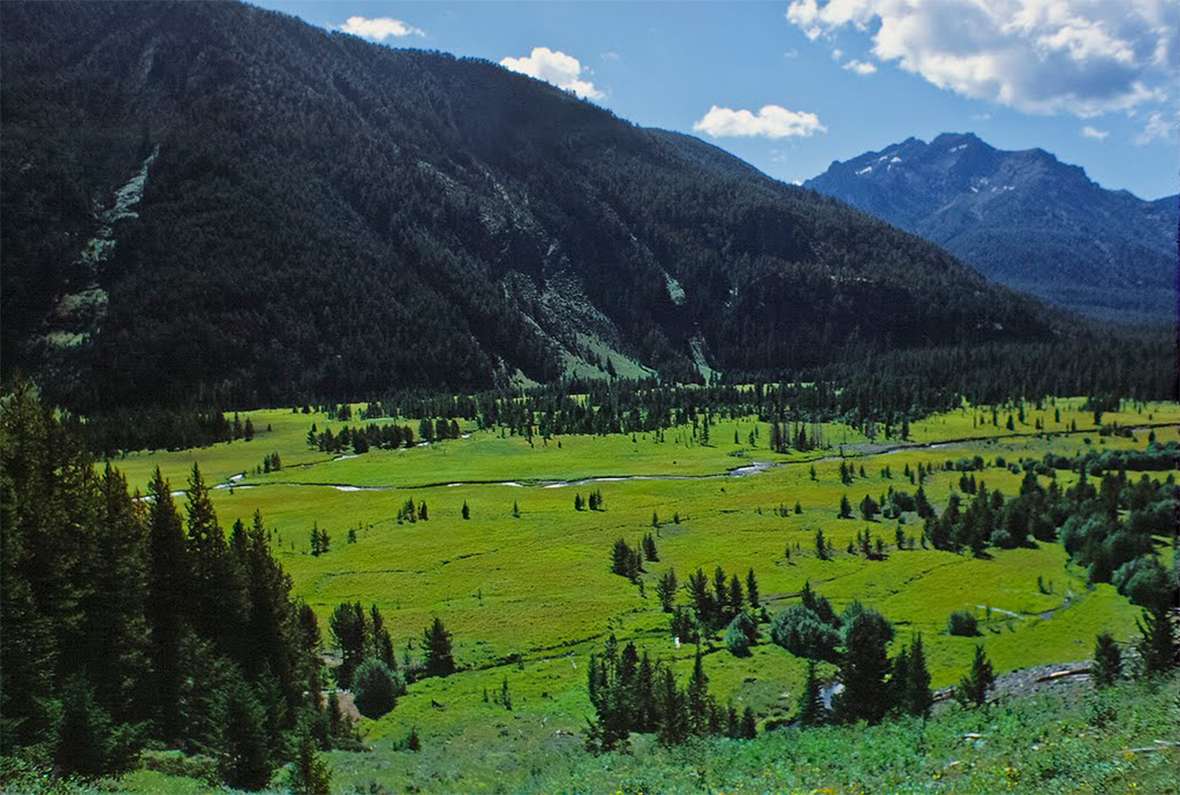
Arnold Hague in Yellowstone
The U.S. Geological Survey (USGS) appointed Hague to head its efforts to study geysers, especially their relation to ancient volcanoes. Hague knew the subject well, having studied volcanoes in the Pacific states and Guatemala. He’d graduated from Yale, studied in Germany and worked in China. The son of a Baptist clergyman from an old New England family, Hague had become a scientist at an exciting time: Charles Darwin’s theories were expanding the frontiers of science just as European cultures were expanding to little-known lands.
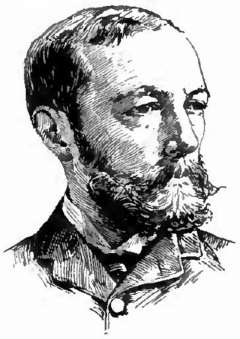
Hague returned to the Yellowstone area for seven straight summers, with a growing field of study. He was well-traveled, with far-ranging interests. For example, he was the first to chronicle flecks of gold in the Stinkingwater Mining Region, at the confluence of Needle Creek and the South Fork of the Shoshone River southwest of present Cody, Wyo.
William F. “Buffalo Bill” Cody then patented these claims, and with Eastern investors sought for 20 years to develop mines in the district. The USGS in 1899 published Hague’s study—it covered more than 3,000 square miles—as a book and atlas titled “Geology of the Yellowstone National Park,” still praised by geologists almost a century later as one of the most in-depth Yellowstone studies ever performed.
But Hague’s interests extended beyond geology. In particular, he was concerned about protecting and preserving Yellowstone at a time when the park was threatened by expanding concessionaires, big-game hunters and railroads.
When these special interests sought inappropriate uses—hotels too close to natural features, lax enforcement of hunting regulations, or a railroad through the Lamar Valley—Hague fought against them. To influence federal policies, he was often joined by William Hallett Phillips, a Washington, D.C., lawyer appointed as a “special agent” for Yellowstone by the Interior Department.
Hague loved Yellowstone’s scenery: mountains, sunsets and wild animals. Having frequently followed elk trails, he believed that elk “have an appreciation of the picturesque and the grand.” But he rarely couched conservation arguments in sentimental terms. He frequently spoke of how both the Missouri and the Columbia river systems had their sources in Yellowstone National Park.
Pushing for an expanded Yellowstone
In an 1883 letter to U.S. Sen. George Graham Vest of Missouri, Hague noted that New York State’s quest to provide uniform water flow in the Hudson River necessitated complicated and expensive efforts to buy or control the Adirondack forests where the streams began. He suggested expanding Yellowstone’s borders to secure similar protections before private settlers arrived.
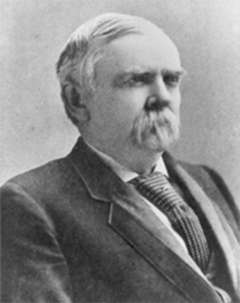
The idea of expanded park borders was not new. In 1882 Gen. Phillip Sheridan had proposed expanding the park 40 miles east and 10 miles south. George Bird Grinnell, the famed writer and conservation activist, highlighted the plan in his Forest and Stream magazine. Early in 1883, Sen. Vest sponsored an extension bill, which failed to pass. (A revised, successful bill improved park protections without changing its boundaries.) Hague’s scientific credentials and vast onsite knowledge could aid the cause.
Hague proposed expanding southward by eight rather than 10 miles (to the 44th parallel, near the north end of today’s Jackson Lake, thus excluding the Tetons) to avoid conflicts with potential mines or summer grazing lands. For similar reasons, his proposal for expansion went only 30 miles east. Briefly, he even flirted with rationalizing the park’s northern and western boundaries to match those of the Wyoming Territory.
Vest included Hague’s recommendations in four bills through the 1880s. They all failed, largely due to opposition from railroads wanting to build across the park’s northeast corner from Gardiner to Cooke City. But during the debates, Hague, Phillips of the Interior Department, Grinnell the conservationist writer and others also highlighted the wildlife benefits of an expanded preserve. These benefits took on increasing importance as concern rose through the 1880s about disappearing wildlife populations elsewhere in the West.
Advocates of expansion also started collecting their arguments about watersheds and habitat under the category of protecting forests. Forests, which provided the wildlife habitat and watershed protection, were at risk of being cleared for agriculture or cut down to provide timber for mines or charcoal for kilns. Without better protections for Yellowstone and its environs, Grinnell wrote, “Anyone was at liberty to cut down the forest, kill the game or carry away natural curiosities.”
Because of their work on behalf of Yellowstone, Hague and Phillips became the only two non-hunters ever elected full members of the influential Boone and Crockett Club. The elite sportsmen’s club, brainchild of Grinnell and Theodore Roosevelt, sought to influence federal policy on behalf of wildlife the same way the Audubon Society did for birds. The club represented the seed of Roosevelt’s conservation philosophy, which was to sprout so effectively during his presidency. In the club’s early days, one of the conservation leaders its members most admired was Arnold Hague.
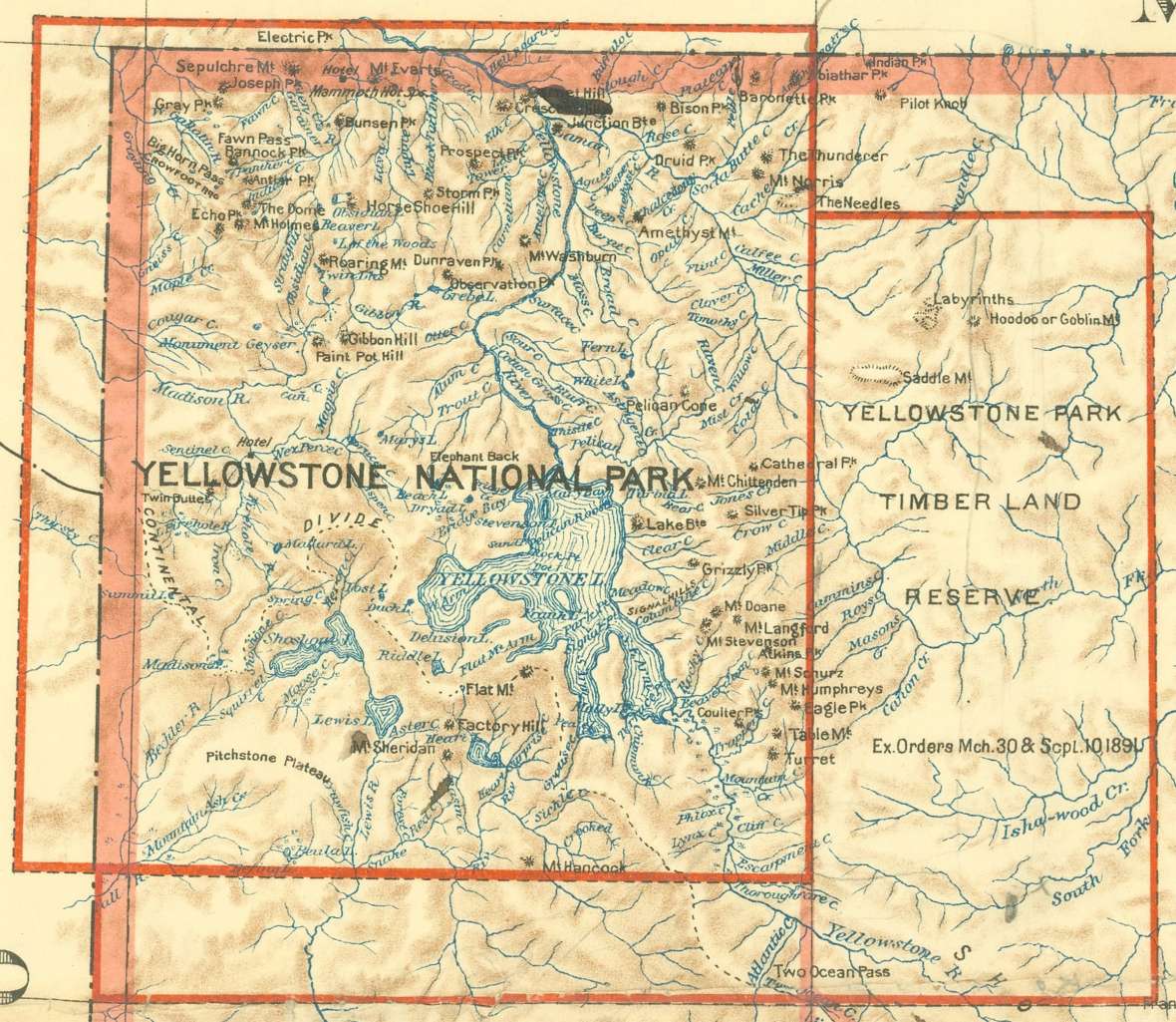
Creation of the Yellowstone Timber Land Reserve
Other leaders at the time highlighted the nationwide benefits of forests, and the risks of wantonly cutting them down. Given how the clearcut forests of northern Wisconsin and Michigan had soon fallen prey to erosion and fire, should some forested lands in the West be held as public reservations?
Although in general the U.S. government wanted to give away the public domain to homesteaders, many congressmen at the time feared large corporations would assemble timber monopolies from formerly public lands. In this line of thinking, forest reserves could represent a Jeffersonian ideal. They could aid homesteaders by making small-scale timber cutting available to middle-class settlers, while ensuring watershed health.
Although bills with this goal failed in the 1880s, one did succeed in 1891. The key passage, known as Section 24, was a last-minute rider attached to a bill making broad reforms in public-land law.
Section 24 permitted the president to set aside timbered portions of the public domain as public reservations. However, it didn’t indicate what the purpose of these reservations should be, nor how they should be used, administered or funded.
President Benjamin Harrison signed the bill on March 3, 1891. Late the following week, Hague and Phillips discovered Section 24. Hague realized that it could accomplish his aims of expanding Yellowstone’s boundaries. On March 16, he took the idea to Secretary of the Interior John W. Noble. Noble asked Hague and Phillips to draft a proclamation to create the first Forest Reserve with the exact same boundaries Hague had proposed to Sen. Vest eight years earlier. President Harrison signed the proclamation on March 30, 1891, creating the 1.2-million-acre Yellowstone Timber Land Reserve.
Why isn’t Hague better known as its creator? Because he understood politics and was more interested in results than fame. On April 4, he wrote to Grinnell with information to be used in a Forest and Stream editorial lauding what would become known as the Forest Reserve Act of 1891. Hague wrote, “[Y]ou had better give the Secretary of the Interior a little taffy for his seeing the necessity for this thing.” Grinnell obliged; although his article mentioned Hague, it concluded that “too much credit cannot be given” to Noble.
This was the world’s first forest reserve to be set aside by a democratic government. But it wasn’t really a victory for “forestry” as we know it today. Instead, Hague and his allies often described the reserve as, effectively, an adjunct to the world’s first national park.
As Grinnell wrote, since people would be prohibited from living there, it would be easy later to transfer these lands to the park. In an 1898 essay (reprinted in the 1903 book Our National Parks), famed naturalist John Muir wrote that Yellowstone “was to all intents and purposes enlarged” by the reserve. His interpretation, however, proved overly optimistic.
Failures of the early forest reserves
In the same way that the U.S. Constitution arose out of years of frustration with the Articles of Confederation—an early attempt to translate idealistic principles to governance, with numerous practical failures—so too did the U.S. Forest Service arise out of the Forest Reserves. The period 1891–1905 saw a long struggle to effectively articulate a vision and management philosophy for administering federal forest lands.
After creating the Yellowstone Timber Land Reserve, President Harrison established additional forest reserves in Colorado, New Mexico and Oregon. He eventually preserved 13 million acres, and his successor, Grover Cleveland, added 25 million more.
But though Congress, perhaps unintentionally, had ceded to the president the authority to create reserves, it refused to decide how to manage them. And without guidance from Congress, no activity was allowed at all in the reserves. No homesteading, no logging, no mining, no grazing, no hunting—no trespassing! “Trespassing on the public lands within these forest reserves will not be tolerated under any pretext,” read one government communication. These lands were reserved from use, and so nobody was allowed onto them.
Unsurprisingly, the Forest Reserve Act didn’t provide any budget to manage the reserves, or suggest any penalties for trespass or depredations, so in most reserves the regulations were toothless. But the Yellowstone reserve was placed under the authority of the Army, which was then managing the adjacent national park, and Army officials could extend ranger patrols to the east and south.
The following year the Army built a ranger cabin at Polecat Creek, near today’s Flagg Ranch south of the park’s boundary. But by 1894 the superintendent was complaining that the added regions were too remote, too large, too rugged, and too frequented by hunting parties to be effectively policed with his limited manpower. Likewise, an official report in 1897 noted that at least 100 prospectors and 25 ranchers were spending the summer in the forest reserve, all of them hunting, in areas too remote to patrol without increased budgets.
In other regions, clashes over forest reserve policies were more severe. In Colorado, homesteaders and stockgrowers expressed outrage at the loss of their “rights.” They also feared that the far-off Interior Department might sell off timber to an Eastern monopolist, a result that would have been the opposite of the law’s intention.
In Oregon, opposition to the vast Cascade Range Forest Reserve arose primarily from sheep ranchers and miners denied access to grazing or mining on public lands. Ironically, the fate of timber in the reserves was a lesser issue—perhaps because the remote, high-elevation stands were not seen as commercially viable, or perhaps because large timber companies hoped that federal regulation would stabilize the market and reduce competition.
In a further irony, the authors of Section 24 had likely intended to permit grazing and small-scale logging on the reserves. But the section’s confusing language and lack of follow-up led to public opposition to the law.
The National Forest Commission
To remedy the stalemate, federal leaders asked the National Academy of Sciences to appoint a blue-ribbon commission to help resolve the fate of the reserves. Critics of the commission—such as Bernhard Fernow, who ran the advisory-only Division of Forestry in the federal Department of Agriculture—said that its summer-long tour of Western forests would be little more than a junket. But its fans hoped that it could do what Congress had yet failed to: figure out a policy for forest conservation, and spur legislation accomplishing that policy.
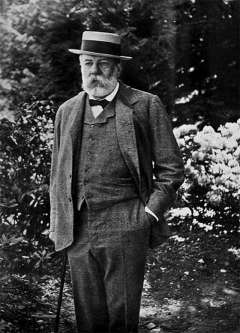
The commission’s chair was botanist Charles Sprague Sargent, head of Harvard University’s Arnold Arboretum and publisher of Garden and Forest magazine. Its secretary was a young forestry graduate—at 31, half the average age of the other commissioners—named Gifford Pinchot. Also on board: Gen. Henry L. Abbot of the U.S. Army Corps of Engineers, a veteran of Western railroad surveys; Alexander Agassiz, curator at the Harvard Museum of Comparative Zoology; Yale professor William H. Brewer, who was also California’s state botanist; John Muir, in an unofficial advisory capacity since he wasn’t the sort of person to join committees; and Arnold Hague.
Hague’s reputation and experience made him one of the nation’s leading experts on forest reserves. In fact, Hague and Pinchot were assigned to make a preliminary report and recommendation before the commission began its tour.
In 1896, the commissioners toured the Black Hills, Yellowstone, northwestern Montana, Oregon’s Cascades, California’s Sierra, the Grand Canyon, New Mexico and Colorado. They traveled mostly by train, and not always together: Pinchot took a side-trip to examine Montana’s Bitterroot Range, and Muir took a long break to visit Alaska. They returned to the East with numerous recommendations for new forest reserves.
But they still had little agreement on how to manage the reserves. For example, Pinchot believed in the emerging discipline of forestry, maximizing the efficiency of timber production as if trees were agricultural crops capable of a sustained yield. In contrast to that resource-based approach, Sargent and Muir tended to think of trees and forests in more holistic, perhaps more sentimental, terms. Sargent and Abbot favored military management; Pinchot, Brewer and Hague argued for civilian control.
Muir was fanatically opposed to sheep grazing (he memorably referred to sheep as “hoofed locusts”). Sargent expected political opposition to whatever they recommended; Pinchot fulminated at Sargent’s lack of political will.
The result: The commission recommended 13 new reserves totaling 21 million acres. They hurried through the recommendation process so that President Cleveland could create the reserves in the month before he left office. Cleveland issued the proclamation creating the new reserves on Washington’s Birthday, February 22, 1897.
Among the newly set-aside lands was the 892,440-acre Teton Forest Reserve south of Yellowstone. Hague’s original Yellowstone Timber Land Reserve remained intact, with its lands 30 miles east and eight miles south of the park boundary. But the Teton Reserve added another 15–20 miles southward, including the Teton Range and the northern half of Jackson Hole.
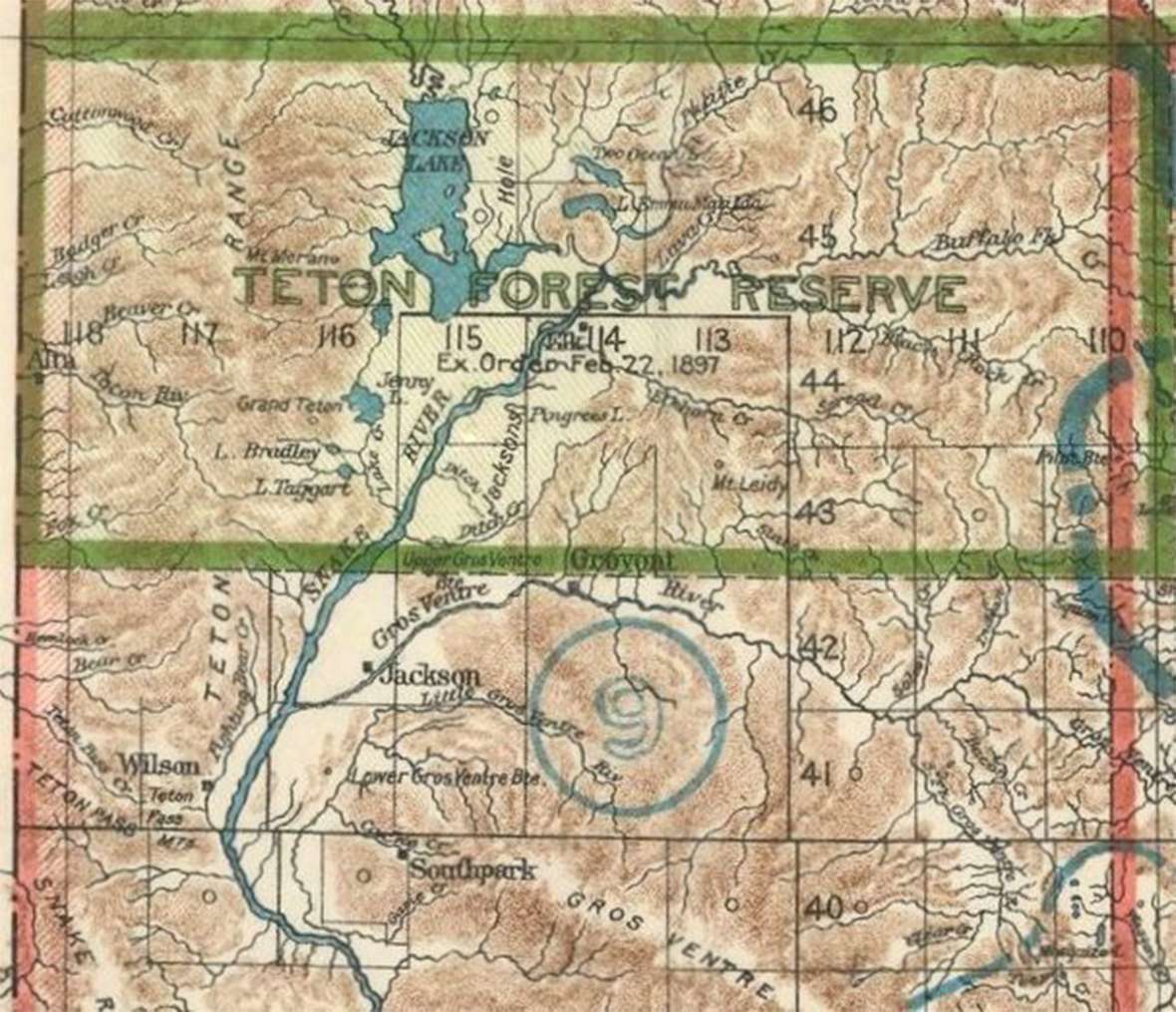
Problems and promise
That recommendation demonstrated both the problems and the promise of the Forest Reserve system. The problems: Hague had withheld the Teton Reserve lands from the original Yellowstone Timber Land Reserve because he knew that demands for grazing and mineral development made them poor candidates to become part of Yellowstone National Park. Furthermore, given the combination of the open lands of Jackson Hole, the effects of past forest fires and the lands above timberline, perhaps only 40 percent of the Teton Forest Reserve was actually forested.
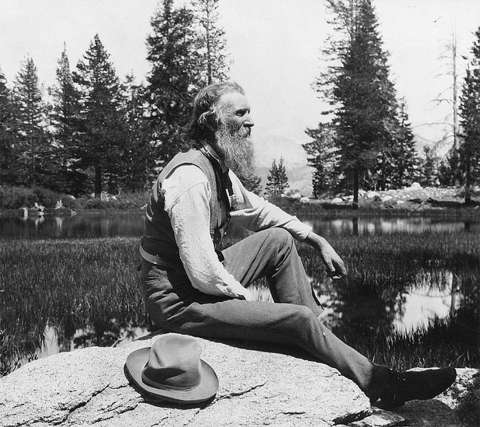
Worst of all, as of the proclamation, the commission still had not decided the purpose of forest reserves. So these lands, like the 12 other new reserves, became off limits to use. As a result, Cleveland’s proclamation created a serious backlash in Western states.
Congressmen quickly drafted language restoring all forest reserves to the public domain—and attached it as a rider to the basic bill funding the entire government. Cleveland, on his last day in office, used a pocket veto to kill the bill, threatening a government shutdown. The new president, William McKinley, had to call an extra session of Congress. Now the entire forest movement was in jeopardy.
Amid intense lobbying on all sides, Congress found a compromise. First, it suspended the 13 new reserves for nine months, allowing thousands of acres to be transferred to private ownership. Second, it established purposes for the reserves, and gave the Interior Department authority to regulate their use, in a law now often known as the Forest Management Act (or Organic Act) of 1897.
As interpreted by the increasingly powerful Gifford Pinchot, permissible uses included timber harvests, dams, and grazing by cattle and (much to Muir’s dissatisfaction) sheep. With uses permitted, Western commercial interests became increasingly willing to accept new reserve acreages.
In 1902, the Yellowstone and Teton Reserves were greatly expanded. (They were also reorganized, with lands south of the park consolidated in the Teton Forest Reserve and lands east of the park renamed the Yellowstone Forest Reserve. In subsequent years, the lands would be repeatedly reorganized and renamed.)
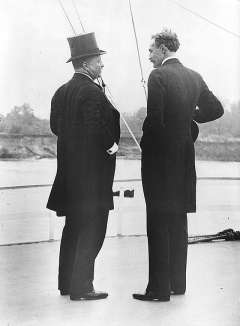
Yet the fact that reserves were no longer extensions of national parks also demonstrated their potential. Through the first decade of the new century, after Roosevelt ascended to the presidency in 1901, Roosevelt and Pinchot continued to clarify the utilitarian philosophy of the “multiple use” system—and greatly expanded the nationwide scope of protected lands.
In 1907, to reflect the fact that these lands were no longer “reserved” from use, the reserves were renamed national forests. America found a vital role for these forests, complementary to that of national parks.
In today’s Shoshone and Bridger-Teton National Forests, which administer the lands Hague once arranged to be set aside, tourist demands are much reduced compared to the adjacent national park—and so are regulations on hunting, fishing, camping, hiking, grazing, and logging. But they remain public lands, protected from residential or commercial development, regulated to promote watershed and ecosystem health, and accessible to all.
They play essential roles in the lives of Wyomingites and in the ecosystem of greater Yellowstone. The process of fleshing out those roles began with Arnold Hague.
Resources
Primary Sources
- Grinnell, George Bird. “A New Forest Reserve,” unsigned editorial, Forest and Stream, April 9, 1891, p. 1. Vol 36, p. 225, accessed May 22, 2017 at https://books.google.com/books?id=XkghAQAAMAAJ&pg=PA225&dq=“A+New+Forest+Reserve,”+Forest+and+Stream,+April+9,+1891,&hl=en&sa=X&ved=0ahUKEwiEl5ueqrbTAhVY-GMKHaChDVcQ6AEIIjAA#v=onepage&q=“A%20New%20Forest%20Reserve%2C”%20Forest%20and%20Stream%2C%20April%209%2C%201891%2C&f=false.
- Hague, Arnold et. al. "Geology of the Yellowstone National Park," USGS Monograph 32, U.S. Government Printing Office, 1899–1904.
- Iddings, Joseph P. “Biographical Memoir of Arnold Hague.” National Academy of Sciences Biographical Memoirs 9 (1920): 21-38, accessed May 22, 2017 at http://www.nasonline.org/publications/biographical-memoirs/memoir-pdfs/h....
- Muir, John. Our National Parks. Boston: Houghton, Mifflin and Company, 1903, p. 39.
- “Report of the Secretary of the Interior.” Congressional Serial Set, U.S. Government Printing Office, 1897, p. 796, accessed May 22, 2017 at https://books.google.com/books?id=q1IrAAAAYAAJ&pg=PA796&lpg=PA796&dq=stinking+water+mining+region&source=bl&ots=8p7WtBG89k&sig=7T1q3cnHezeh2qJ2CTHkHsxhVL8&hl=en&sa=X&ved=0ahUKEwje0fbIw7PTAhWCqlQKHaraCwQQ6AEIPDAH#v=onepage&q=stinking%20water%20mining%20region&f=false.
Secondary Sources
- “Arnold Hague.” American National Biography Online. February 2000. Accessed May 22, 2017 at http://www.anb.org/articles/13/13-00675.html.
- Bartlett, Richard A. Yellowstone: A Wilderness Besieged (Tucson: University of Arizona Press, 1985), p. 142.
- Daugherty, John et. al. A Place Called Jackson Hole: A Historic Resource Study of Grand Teton National Park. Chapter 17: Conservationists. Grand Teton National Park and Grand Teton Natural History Association, 1999, accessed May 22, 2017 at https://www.nps.gov/parkhistory/online_books/grte2/hrs17.htm.
- Ellis, Richard J. The Development of the American Presidency. New York: Routledge, 2012, p. 295, accessed May 23, 2017 at https://books.google.com/books?id=BcYBCgAAQBAJ&pg=PA295&lpg=PA295&dq=washington%27s+birthday+reserves+pocket&source=bl&ots=bTX6k7F_Lw&sig=Pcv2C3jS3o7EVIT2VuLwc4DsWxo&hl=en&sa=X&ved=0ahUKEwiUlJ62_4TUAhXHlFQKHVIzCXcQ6AEIKDAC#v=onepage&q=washington's%20birthday%20reserves%20pocket&f=false.
- Haines, Aubrey L. The Yellowstone Story. Vol. 2. University Press of Colorado, 1977. pp. 94–99
- Rydell, Kiki Leigh, and Mary Shivers Culpin. Managing the “Matchless Wonders”: A History of Administrative Development in Yellowstone National Park, 1872–1965. Yellowstone National Park, Wyoming: National Park Service, Yellowstone Center for Resources, YCR-2006-03, 2006, pp. 36-37.
- Rakestraw, Lawrence. A History of Forest Conservation in the Pacific Northwest, 1891-1913. New York: Arno Press, 1979; Forest History Society, 2009, accessed May 22, 2017 at http://www.foresthistory.org/aspnet/publications/region/6/rakestraw_thesis/contents.htm. See especially Section 2.
- Steen, Harold K., ed. The Origins of the National Forests: A Centennial Symposium. The Origins of the National Forests: A Centennial Symposium, Forest History Society, 1992. Accessed May 22, 2017 at http://www.foresthistory.org/Publications/Books/Origins_National_Forests/contents.htm. This comprehensive collection, especially sections 8, 18, 20 and 21, provides the major source for this article.
- Williams, Gerald W., and Char Miller. “At the Creation: The National Forest Commission of 1896-97.” Forest History Today, Spring/Fall 2005, pp. 32-40.
Archives and collections
- The Park County Historical Archives in Cody has a Shoshone National Forest History file with several clippings and memoirs, including a discussion of Arnold Hague on the Stinkingwater.
- Hague and others were mentioned in Wyoming newspapers; you can search on their names at http://newspapers.wyo.gov/.
For further reading
- “A Plan to Save the Forests.” The Century Illustrated Monthly Magazine. Volume 49, pp. 626-634. An 1895 symposium on the reserves, with contributions from Sargent, Pinchot, Muir, Roosevelt, Yellowstone superintendent George Anderson, and others.
- Allan, Esther B. “History of Teton National Forest.” Jackson, Wyo.: Bridger-Teton National Forest, 1973, pp. 107-120, accessed May 22, 2017 at https://www.fs.usda.gov/Internet/FSE_DOCUMENTS/fseprd534131.pdf. Many great details and reminiscences of Jackson Hole and the Teton Forest Reserve, although weak on context.
- Brandegee, Townshend Stith. The Teton and Yellowstone Park (southern Part) Forest Reserves, U.S. Government Printing Office, 1899. A descriptive account, by a botanist assessing timber.
- Cleveland, Grover. "Proclamation 394—Withdrawl [sic] of Lands for the Teton Forest Reserve, Wyoming." February 22, 1897. Online by Gerhard Peters and John T. Woolley, The American Presidency Project, accessed May 22, 2017 at http://www.presidency.ucsb.edu/ws/?pid=70861.
- Ise, John. The United States Forest Policy. New Haven, Conn.: Yale University Press, 1920.
- Miller, Char. Gifford Pinchot and the Making of Modern Environmentalism. Washington, D.C.: Island Press, 2001.
- Steen, Harold K.. The U.S. Forest Service: A History, Seattle: University of Washington Press, 2004.
- Worster, Donald. A Passion for Nature: The Life of John Muir. New York: Oxford University Press, 2008.
Illustrations
- The photo of Eagle Creek Meadows in the Shoshone National Forest is by Ralph Maughan, from Panoramio. Used with thanks.
- The photo of U.S. Senator George Vest is from the Biographical Directory of the US Congress. Used with thanks.
- The 1892 General Land Office map of the Yellowstone Timber Land Reserve is from Wyoming Places. Used with permission and thanks.
- The drawing of Arnold Hague, originally published in Appletons' Cyclopædia of American Biography, 1892, is from Wikimedia. Used with thanks.
- The photo of Charles Sprague Sargent, first published in The World’s Work, 1901, is from Wikimedia. Used with thanks.
- The 1900 GLO map of the Teton Forest Preserve is from Wyoming Places. Used with permission and thanks.
- The 1902 photo of John Muir is from the Library of Congress. Used with thanks.
- The 1907 photo of President Theodore Roosevelt and Gifford Pinchot on the steamer Mississippi is from the Library of Congress. Used with thanks.
